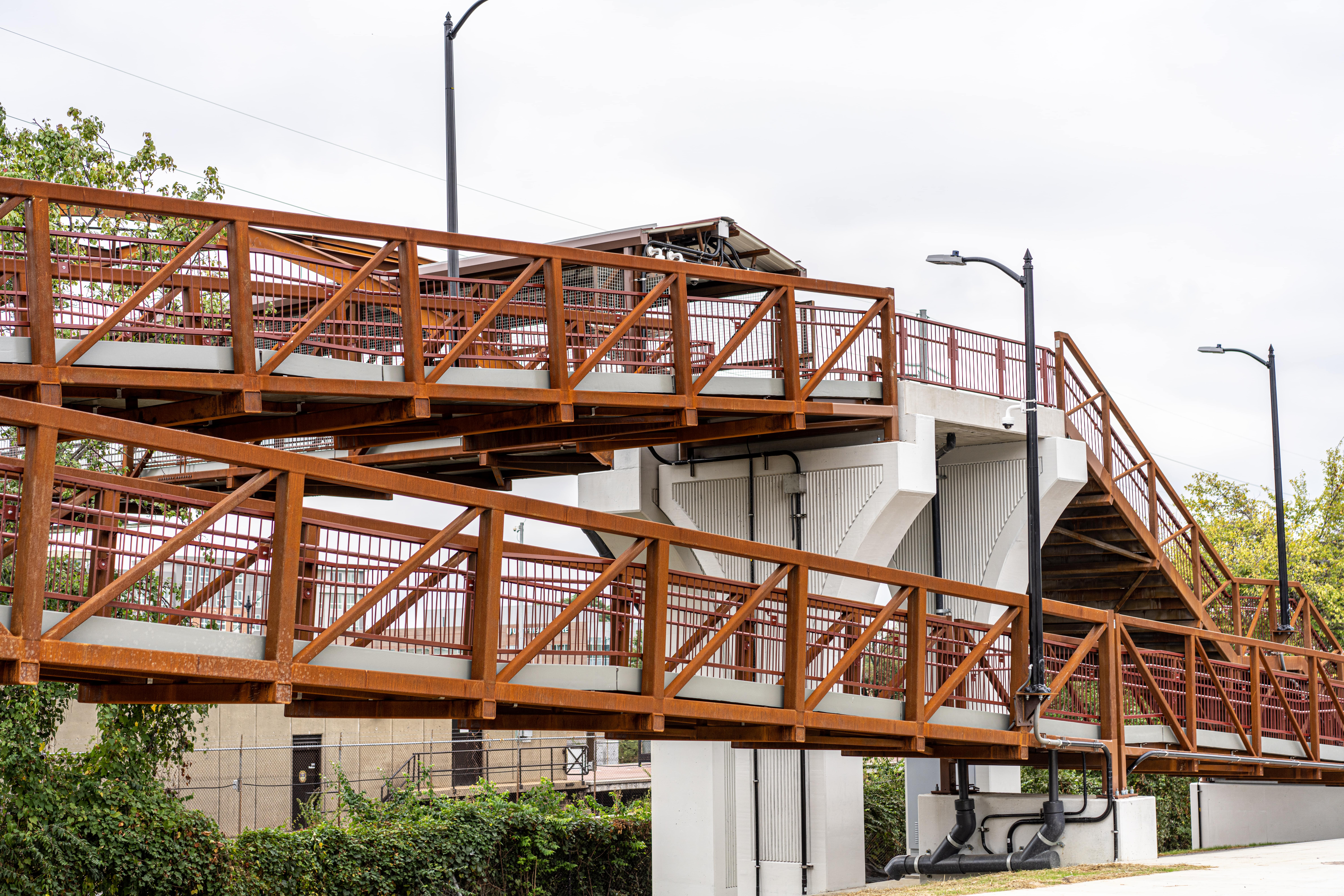Since 2005, Composite Advantage has been a leading supplier of fiberglass-reinforced plastic (FRP) for infrastructure construction materials. FRP is a durable and cost-effective alternative to standard construction materials such as concrete. Its benefits as an infrastructure material include:
- Exceptional durability
- Greatly enhanced service life
- Superior water and chemical corrosion resistance
- Reduced overall lifetime costs
- Quick and lower cost installation
- Versatile design capabilities
Infrastructure is expensive to construct and even more costly to maintain. FRP is modern technology’s answer to the high cost of construction, maintenance, repair, and replacement of conventional materials in infrastructure such as bridges, rail platforms, overpasses, and bridge decks.
Reduced Labor Costs
FRP is easy to manufacture into lightweight components, panels, and other construction materials, and can be prefabricated before installation on site, thereby shortening the overall project schedule. By the time the site is prepared, the prefabricated FRP materials can be completed and ready for installation. By comparison, precast concrete takes 15 days longer to fabricate and is significantly heavier, which makes it more time consuming and expensive to use in construction projects.
FRP is lighter and easier to maneuver than traditional construction materials, which results in smoother transport and installation. Lighter FRP components require fewer workers and less expensive equipment to complete installation, and can be accomplished in tight construction windows such as train schedules and rush hour traffic.
Reduced Maintenance and Repairs
FRP is an extremely low-maintenance material, especially when used in infrastructure that is exposed to harsh or corrosive environments. FRP structures require minimal maintenance, even in environments where more traditional materials would be negatively affected. Unlike concrete or asphalt, FRP will not crack or warp when exposed to the constant pressure of high traffic or temperature fluctuations in extreme climates. This means there are fewer repairs and upkeep needed to ensure FRP infrastructure is in optimal working condition.
In addition, FRP has high strength similar to steel, but without the risk of rust and deterioration due to exposure to air and water. Without the corrosion and wear common to other construction materials, FRP’s reduced need for maintenance and repair make it an extremely sound and reliable investment.
No Material Replacement Costs
FRP has a greater life span than traditional construction materials, and will often last decades longer. In fact, while concrete has a life span of approximately 15-20 years, FRP can last up to 75 years. In addition, FRP is highly resilient to corrosion and deterioration from environmental and chemical exposure that would reduce the lifetime of other materials like steel and concrete.
Fewer Reconstructions
In addition to FRP’s significant life span, its lightweight nature places less strain on the overall structure, ensuring a longer lifetime and fewer rebuilds than structures composed of other materials. With less strain on the supporting structure, even non-FRP materials and structural components will benefit from the reduced pressure, thereby extending the overall lifetime of the structure.
Cost Saving FRP Materials From Composite Advantage
According to a recent case study, the cost of maintenance and repairs for a precast concrete platform was approximately $55 more per square foot over the course of 15 years than a bridge composed of FRP, a significant difference in overall cost during the structure’s lifetime. Although the initial price of construction using FRP materials appears to be higher, the reduced labor and transportation during construction, extended structural lifetime, and decreased maintenance and repair costs all add up to major savings when compared to construction with traditional materials.
Because both concrete and FRP have been proven to perform equally well in similar conditions, it is logical to use FRP rather than less durable traditional alternatives. In addition to reducing the cost of construction and long term maintenance, the design optimization using FRP materials has a better reputation and higher standard of performance, which will improve the reliability and quality of the finished product.
At Composite Advantage, we pride ourselves on providing the highest quality FRP on the market. We are dedicated to offering high-tech solutions for the most complex applications. Our experienced and knowledgeable engineers employ innovative designs and state-of-the-art technology to help our customers discover the most comprehensive, efficient, and cost-effective FRP products for their project.
For more information on the cost-saving FRP materials in infrastructure, check out our eBook, “FRP: Benefits, Products, and Applications for Infrastructure.” If you would like to learn more about using FRP on your next project, contact us or request a quote today.
